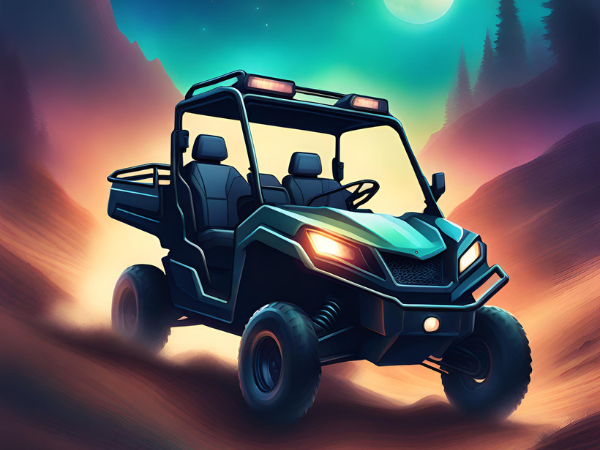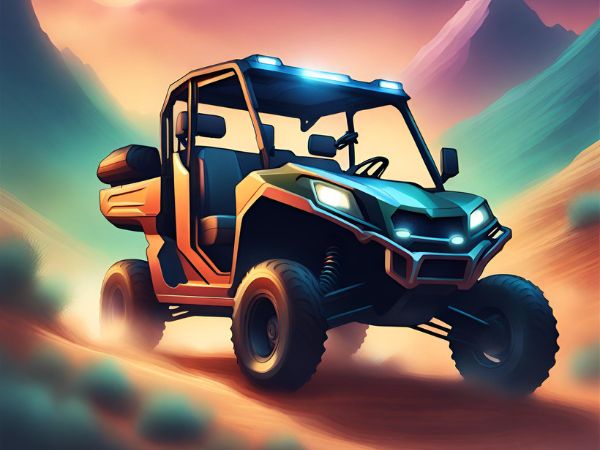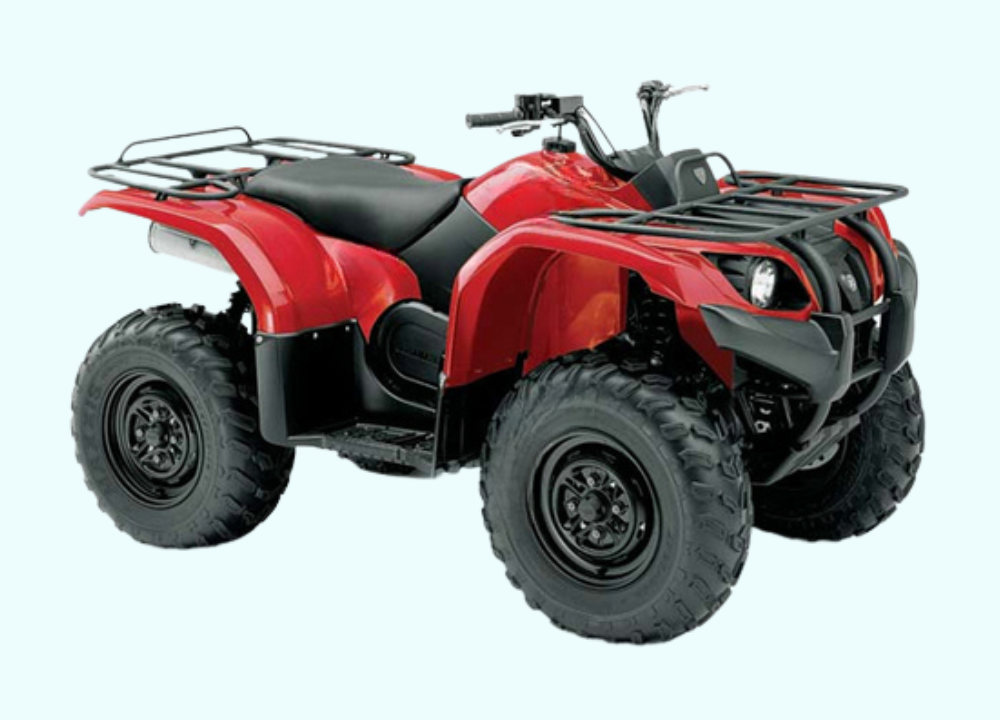The Yamaha Kodiak 400 is renowned for its durability and versatility; common problems include transmission and electrical issues. This ATV is sought after for its off-road performance and reliability.
The Yamaha Kodiak 400 stands out as a robust all-terrain vehicle that excels in various conditions, from farm work to trail riding. Designed as a mid-size utility ATV, it combines a powerful 401cc engine with a practical 4-wheel-drive system to tackle rough terrain.
This model has earned a reputation for being a trustworthy companion for outdoor enthusiasts and workers alike. Despite its strong build, some owners have reported issues related to the transmission, such as difficulty shifting gears, and occasional electrical faults, which could interfere with starting the ATV or running lights. Proper maintenance and addressing any concerns early can help ensure that the Kodiak 400 continues to operate at its best.
Engine And Performance
The heart of the Yamaha Kodiak 400 is its powerful engine. Riders love its reliability and strength. Let’s dive deep into the engine characteristics and performance of the Kodiak 400 that make it stand out on the trails.
Engine
The Yamaha Kodiak 400 comes with a robust engine design. It’s a four-stroke, liquid-cooled, single-cylinder powerhouse. This engine is well-known for its ability to deliver consistent power. It displaces 401 cubic centimeters (cc) which makes it both strong and versatile. The Kodiak’s engine supports electric starting with a backup recoil system, ensuring reliability in various conditions.
- Durable four-stroke engine
- Liquid cooling system for better performance
- Electric start with recoil backup
- 401cc displacement
Components like a carburetor control the fuel intake. This ensure efficiency. The Kodiak also features an Ultramatic® transmission. It provides smooth power delivery to tackle tough terrain.
Speed
Speed is crucial for any all-terrain vehicle. The Kodiak 400’s engine makes it fast enough for both work and play. Its top speed can reach around 50 miles per hour (mph) under ideal conditions. Remember, various factors like weight, terrain, and maintenance can affect speed.
CVT transmission system ensures the Kodiak accelerates smoothly. This automatic system adjusts seamlessly for optimal power and efficiency. You get a pleasing balance of speed and control with the Kodiak 400.
| Characteristic | Detail |
|---|---|
| Engine Type | Four-Stroke, Liquid-Cooled |
| Displacement | 401cc |
| Starter | Electric with recoil backup |
| Top Speed | ~50 mph |
Safety And Design
The Yamaha Kodiak 400 stands out with its rugged design and emphasis on rider safety. Its structure caters to both comfort and reliability in challenging terrains. The machine’s thoughtful engineering aims to create a satisfying balance between a thrilling ride and a secure experience.
Body Design
Yamaha’s Kodiak 400 features a robust body that combines durability and functionality. Its design protects riders from the elements and off-road hazards. Consider the following characteristics:
- Metal racks – Ideal for securing cargo.
- Thick plastic body panels – Shield against mud and debris.
- Low center of gravity – Enhances stability and control.
- Wide stance – Offers improved balance.
Each aspect of the body design contributes to a safer and more controlled adventure.

Suspension Design
The suspension system on the Kodiak 400 ensures a smooth ride across diverse terrains. Its design includes:
| Front Suspension | Rear Suspension |
|---|---|
| Independent double wishbone | Swingarm with single shock |
| 6.3 inches of travel | 7.1 inches of travel |
| Five-way preload adjustment | Five-way preload adjustment |
Both front and rear suspensions adapt to rider needs, providing both comfort and safety.
Shock absorbers minimize impact, reducing rider fatigue and maintaining control. Handling rough landscapes becomes less strenuous, enhancing safety for all levels of riders.
Features
Exploring the wilderness becomes thrilling with the right ATV. The Yamaha Kodiak 400 stands out for its features. Durable and reliable, it tackles various terrains with ease. Let’s dive into what makes this ATV a must-have for off-road adventures.
4×4 Capability
The Yamaha Kodiak 400 boasts an impressive 4×4 drivetrain. This feature is critical for riders tackling rugged landscapes. Four-wheel drive ensures power goes to all wheels. It helps maintain control on slippery or uneven ground.
- Traction: Better grip in mud, sand, and snow.
- Versatility: Switch between 2WD and 4WD as needed.
- Design: Built with a tough, terrain-ready chassis.
Electronic Power Steering
With Electronic Power Steering (EPS), the Kodiak 400 provides a smoother ride. EPS reduces rider fatigue. It also enhances handling. It adjusts based on speed for better control. This feature is key for long rides or when navigating obstacles.
| Speed | Steering Assist Level |
|---|---|
| Low | High |
| High | Low |
Reliability
The Yamaha Kodiak 400 stands as a symbol of robustness in the world of ATVs. Renowned for its solid performance in various conditions, the Kodiak 400 has garnered a loyal following. This section dives into the intricate details of its durability and what owners should know about maintenance to keep their machines in top form.
Durability
The chassis of the Kodiak 400 showcases a rugged construction designed to withstand tough rides. Its build features high-quality materials, giving it the strength needed for challenging terrains. The Kodiak not only faces the demands of off-road adventures but also long-term operations.
- Heavy-duty steel frame
- Protected by a high-impact plastic skid plate
- All-terrain tires for grip and longevity
Owners often praise the Yamaha Kodiak 400 for its ability to maintain structural integrity even after years of use. The quad’s resilient nature makes it a reliable partner for both work and leisure.
Maintenance
To ensure the Kodiak 400 remains a reliable asset, regular maintenance is essential. Simple steps can greatly extend its lifespan and preserve its features. Let’s look at the key areas to focus on:
- Consistent oil and filter changes
- Regular cleaning of air filters
- Checking and replacing brake pads when needed
- Inspecting and lubricating the drive chain and chassis
Following these maintenance tasks will help prevent common problems and minimize wear and tear. With the right care, the Kodiak 400’s engine and transmission can perform flawishly over many years.
Tip: Refer to the owner’s manual for a detailed maintenance schedule. Keeping up with the manufacturer’s recommendations can significantly contribute to the ATV’s reliability.

Common Problems
Exploring the wilderness on a Yamaha Kodiak 400 is an adventure like no other. But like all machines, it can face some trail troubles. We’ll dive into the common problems owners might encounter. Discover what could go wrong and how to possibly troubleshoot these issues.
Engine Troubles
Yamaha Kodiak 400’s engine issues are a rider’s hiccup. Keep an eye out for these signs:
- Hard starting: Cold mornings may leave you cranking.
- Overheating: Hot days or heavy loads push it too far.
- Irregular idling: It might sputter or stall when you least expect.
Regular maintenance helps. Inspect air filters and fuel lines often for a smoother ride.
Electrical Issues
The Kodiak 400’s heartbeat is its electrical system. Common snags include:
- Faulty spark plugs
- Weak batteries
- Corroded connections
Check your battery’s charge and spark plug health to avoid sudden electrical upsets.
Steering Complications
Steering should be tight and responsive. Loose steering feels unsafe on uneven terrain. Look for these signs: Worn Ball Joints – Your ride becomes shaky. Damaged Tie Rod Ends – Turning gets tougher.
Keep steering components in check for a safer, smoother trip.
Transmission Concerns
A Kodiak’s transmission should swap gears smoothly. Rough shifts tell a different story. Pay attention to:
- Gears slipping
- Delayed engagement
- Unusual noises
Change transmission fluids at suggested intervals. It helps prevent transmission drama.
Suspension Stress
Rough trails test the Kodiak’s suspension. You want a ride that’s smooth and steady. Suspension issues feel bumpy. Look out for these:
- Squeaking sounds
- Uneven tire wear
- Excessive dive during braking
Regular inspections keep your suspension in top shape.
Review Yamaha Kodiak 400
The Yamaha Kodiak 400 stands tall in the world of ATVs. This beast offers power and reliability for trailblazing adventures. The Kodiak 400 has become synonymous with versatility. Owners love taking this quad through rough terrains and for heavy-duty work.
Pros
- Versatile Use: From towing heavy loads to exploring trails, the Kodiak 400 excels.
- Robust Engine: The 401cc engine packs ample power for most tasks.
- User-Friendly: Features like Electric Start and Ultramatic transmission make it easy to ride.
- Durable: Yamaha is known for longevity, and the Kodiak 400 is no exception.
- Comfort: A comfy seat and smooth suspension keep rides enjoyable.
Cons
- Aging Design: Newer models overshadow its once cutting-edge look.
- Limited Features: Lacks some modern amenities found in recent ATVs.
- No Fuel Injection: Uses a carburetor, which can be tricky in cold conditions.
- Heavy: Its weight can make it less nimble on challenging trails.
- Maintenance: Requires consistent upkeep to maintain performance.
Frequently Asked Questions Of Yamaha Kodiak 400
What’s The Difference Between The Yamaha Grizzly And Kodiak?
The Yamaha Grizzly is designed for rugged terrain and heavy-duty use, with more features and a larger chassis. The Kodiak offers a lighter, more compact frame for versatility and ease of handling, targeting cost-conscious consumers and utility-focused tasks.
Does Yamaha Kodiak Have Power Steering?
Yes, select models of the Yamaha Kodiak offer Electric Power Steering (EPS) to enhance handling and rider comfort.
Is The Yamaha Kodiak Fuel Injected?
Yes, the Yamaha Kodiak is equipped with fuel injection for improved engine performance and efficiency.
Is A Yamaha Kodiak Water Cooled?
Yes, the Yamaha Kodiak features a water-cooled engine system for consistent temperature management during operation. This enhances performance and reliability.
Conclusion
The Yamaha Kodiak 400 stands as an enduring ATV choice, blending reliability with rugged performance. Despite its known issues, like transmission glitches and electrical quirks, enthusiasts value its versatility and off-road prowess. Overall, proper maintenance can ensure this four-wheeler remains a loyal companion on any outdoor adventure.
Embrace the Kodiak 400 for its strengths, and you’ll have a ride that’s tough to beat.

